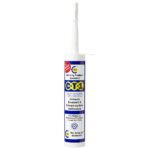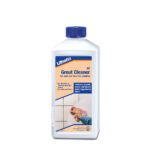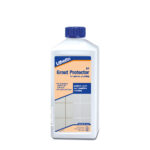Your kitchen tiles are more than just a surface; they’re a canvas that adds beauty, style, and character to one of the most frequently used spaces in your home.
However, the kitchen is also the hotspot for cooking experiments, accidental spills, and accumulated grime. Over time, these factors can rob your tiles of their pristine appearance, leaving them dull and lacklustre.
The Importance of Cleaning Your Kitchen Tiles
Kitchen tiles, whether they grace your floor or walls, act as the silent bearers of multiple spills, splashes and crumbs that occur on a daily basis.
Their proximity to the cooking and dining area means they are exposed to everything from oil splatters to beverage spills. Such messes, when left unattended, can harden over time and become tricky to remove.
Regular and thorough cleaning, therefore, isn’t just about maintaining aesthetic appeal—it also ensures hygiene by eliminating harmful bacteria and germs.
Choosing the Right Cleaning Solution for Your Kitchen Tiles
For routine cleaning, a solution of warm water and mild dish soap is often sufficient.
Simply combine a drop of dish soap with a bucket of warm water, and you’re good to go.
On the other hand, for stubborn stains, a ‘baking soda and water’ paste can work miracles. Apply the paste, leave for a few minutes, and then scrub away the stain.
For deep cleaning, commercially available tile cleaners are recommended. These products contain powerful ingredients designed to break down stubborn grime and dirt.
Appropriate Kitchen Tile Cleaning Tools
Equally important to the solution are the cleaning tools. For routine cleaning, a soft cloth or sponge is perfect. It’s gentle enough to avoid scratching the tile surface while effectively removing dirt and grime.
For more stubborn dirt or for cleaning grout, consider using a small brush with firm bristles.
It’s also worth investing in a good-quality mop for larger areas. Microfiber mops are a solid choice as they absorb a significant amount of water and dirt, leaving your tiles spotless.
| Avoid metal-bristled brushes or steel wool, which can scratch or dull your tiles |
How to Clean Kitchen Tiles
Follow our simple steps on how to clean your kitchen tiles the right way:
Step 1) Clean the Surface Dirt
Begin by sweeping or vacuuming the tiled area to remove loose dust and debris. This ensures that the surface is prepared for the cleaning solution.
Step 2) Apply the Tile Cleaning Solution
Once ready, apply your chosen solution evenly across the surface and allow it to sit for a few minutes to work its magic.

Step 3) Gently Scrub the Kitchen Tiles
Next, use your cleaning tools to gently scrub the surface. Pay extra attention to the grout, as this is often where stains accumulate.
Step 4) Rinse the Tiles with Warm Water
Once cleaned, rinse the surface thoroughly with warm water to remove any residual cleaner. Avoid using excessive water, as this can seep into grout lines and cause damage.
Drying and Buffing Your Kitchen Tiles
Once your tiles are sparkling clean, the next step is to dry them thoroughly. Leaving tiles to air-dry can result in water spots or streaks, diminishing the overall shine.
Use a clean, dry cloth to wipe the surface, absorbing any leftover moisture.
After drying, buff your tiles with a microfiber cloth. This final touch not only adds an extra sheen to your tiles but also helps remove any remaining cleaning solution. Regular buffing is an excellent way to maintain your kitchen tiles’ shine and cleanliness between deep cleanings.

Protecting Your Kitchen Tiles
Proper cleaning is only half the battle; safeguarding your tiles from future stains and damage is just as crucial.
One way to achieve this is by sealing your grout lines. Grout, being porous, can absorb liquids and become discoloured. Applying a quality sealant can prevent this, making future cleaning sessions a breeze.
-
 CT1 Unique Sealant & Construction Adhesive£8.00 – £9.00 +VAT
CT1 Unique Sealant & Construction Adhesive£8.00 – £9.00 +VAT -
 Lithofin KF Grout Cleaner 500ml (Ceramic & Porcelain)£15.75 +VAT
Lithofin KF Grout Cleaner 500ml (Ceramic & Porcelain)£15.75 +VAT
For the tiles themselves, consider applying a tile protector. These products form a barrier that repels water and stains, making them easier to clean off.
| Always test any new product on a small, hidden area first to ensure it doesn’t negatively affect the tile’s colour or finish. |
Regular Tile Maintenance
Regular upkeep can extend the life of your kitchen tiles and keep them looking fresh. Incorporate a routine clean into your weekly schedule.
Deal with spills as soon as they occur to prevent staining. Remember, a little regular attention will keep your tiles gleaming for years to come.
Seasonal deep cleaning is also important. This involves a more thorough process, using commercial tile cleaners and a detailed focus on grout lines. This semi-annual or annual effort can help maintain your kitchen’s lustre and hygiene.
Eco-Friendly Tile Cleaning Alternatives
In this era of increased environmental consciousness, it’s important to consider eco-friendly cleaning methods. Baking soda, vinegar, and lemon are all-natural ingredients that can be used to clean your kitchen tiles.
A mixture of vinegar and warm water, for example, can be a highly effective tile cleaner. Alternatively, opt for eco-friendly commercial cleaners. These products contain natural ingredients that are safe for both the environment and your tiles.

Conclusion: How to Clean Kitchen Tiles Properly
Your kitchen tiles are an integral part of your culinary sanctuary, and their cleanliness can significantly influence the room’s aesthetic and hygiene. With the right tools, products, and techniques, keeping your kitchen tiles spotless becomes an achievable task.
By following these simple and practical steps, your tiles can remain as vibrant and radiant as the day they were laid, contributing to a kitchen that’s not only clean but also welcoming and pleasing to the eye.
At Bridport Glass and Tile Centre, we have a range of tile cleaning products that will help you keep your kitchen tiles spick and span! Plus, our collection of kitchen tiles is guaranteed to give you plenty of inspiration for your next renovation project.
Feel free to get in touch with our friendly team of tile experts if you have any questions about cleaning, maintaining or installing your kitchen tiles.
-
 Lithofin KF Grout Protector 500ml (Ceramic & Porcelain)£28.50 +VAT
Lithofin KF Grout Protector 500ml (Ceramic & Porcelain)£28.50 +VAT -
 Lithofin KF Intensive Cleaner (Ceramic & Porcelain)£24.00 +VAT
Lithofin KF Intensive Cleaner (Ceramic & Porcelain)£24.00 +VAT -
 Tileasy DIY Grout Float£13.50 +VAT
Tileasy DIY Grout Float£13.50 +VAT
FAQs
The easiest way to clean your kitchen tiles is with a proper tile cleaning solution. These solution are designed to get rid of dirt, grime and bacteria without damaging the surface. We recommend using a product like Lithofin Wexa Multi Purpose cleaner that can be used on a variety of tile surfaces.
After cleaning your tiles, you should properly dry and buff them to add shine back. Use a microfibre cloth in circular motions to buff the tiles and get them looking new again
If you get grease on your kitchen tiles, you should remove it as soon as possible. The longer you let it sit, the more stubborn it will become. To remove grease or grime, you should use a detergent or degreaser that is designed for tiles. Avoid using harsh abrasive cleaners as these can damage the tile surface and cause discolouration. The Lithofin KF Intensive Cleaner for Ceramic & Porcelain is a great deep cleaner for this.
A vinegar and baking soda solution can be a good way to tackle tough dirt on tiles if you don’t have any tile cleaning solution on hand. You will need to use a bit of elbow grease to get the dirt off, but it can be effective.










